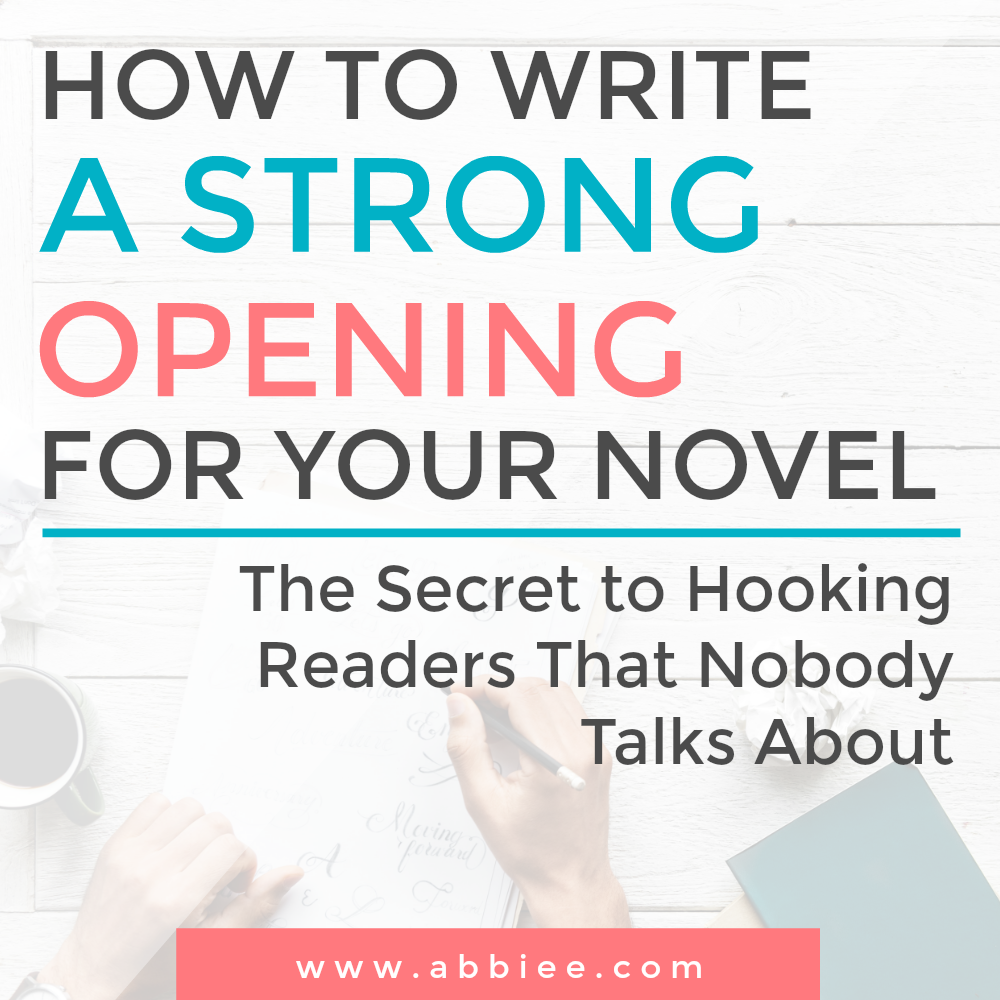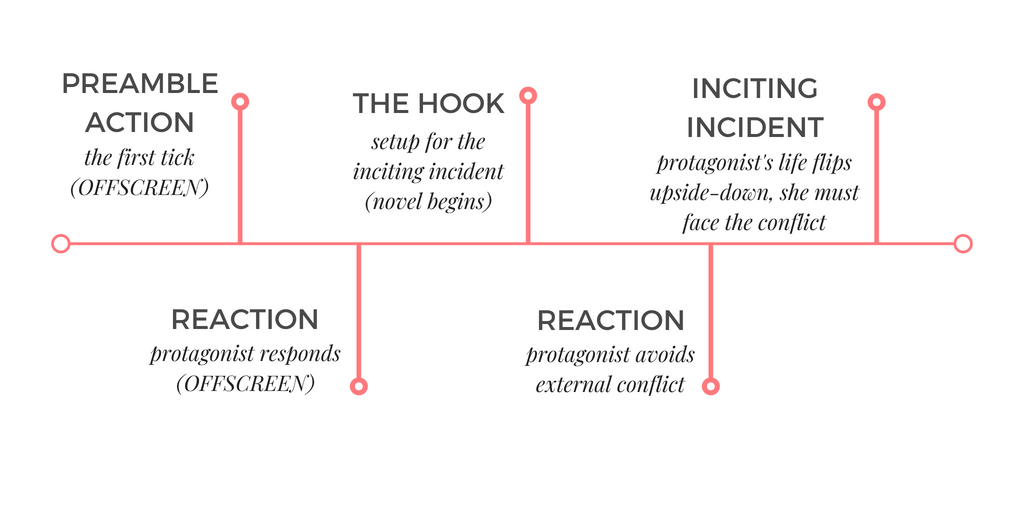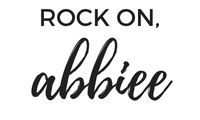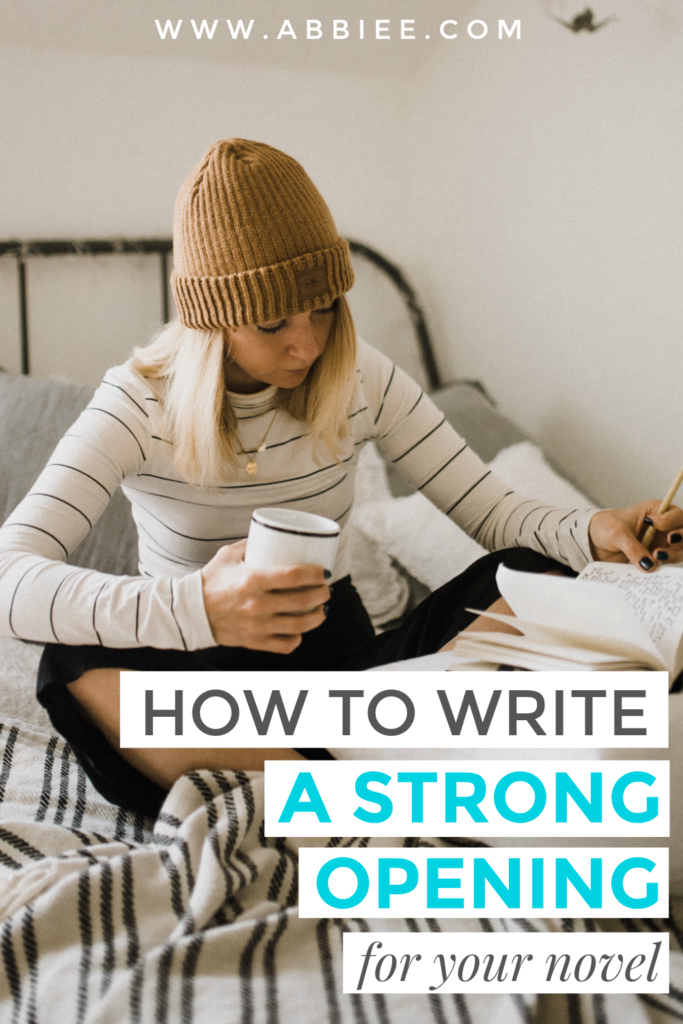Is there anything more daunting than writing the first page, first scene, first chapter of a novel? You might have a brilliant idea, a clever plot, and a thorough outline — but that blinking line is enough to strike terror into your heart.
We’ve all been there before — staring at the first blank page of what will soon be an amazing novel, thinking to ourselves “I’M NOT WRITER. I CAN’T DO THIS.” But that’s only fear talking, and if you’re going to live your dreams and WRITE THAT BOOK, you have to kick that fear out of your mind and get to work. That’s why today’s post is all about writing a strong opening for your novel.
I’d be lying if I said that I still don’t freeze up when faced with the first blank page — I think all writers do, to some degree (even if they don’t admit to it.) But over the years, I’ve learned a lot about writing the opening of a novel. More specifically, what grabs you by the throat and pulls you in and makes you want to keep reading because you have to know what happens next. There’s no exact “right way” to open a novel, of course — but there is an exact formula that you can use to uncover the unique, strong opening to your novel…and I’m going to show you what the formula is today. So grab a cup of tea and settle in — this post is going to be good.
WHY MOST NOVEL OPENINGS SUCK
You probably think I’m going to say: because they are too wordy, too boring, info-dump, talk about the weather, etc. Nope. None of those things. Most novel openings suck because they start too soon. See, there’s a common belief that almost every writer adheres to: the novel begins when the story begins. But it shouldn’t.
Stories that have gripping, surprising, strong openings often begin several would-be plot points after the action really starts. Think of it like this: the timeline of your book is laid out before you — start to finish. But you’re the author, so you don’t have to see it as a linear timeline. You get a bird’s eye view, a 3-dimensional look at ALL the events that shape your story… including the events that happened BEFORE the novel began.
If you Google “how to write a strong opening for your novel” you’ll find a ton of articles giving lots of helpful advice on the technicalities of starting a novel. How to write a “hook” sentence, or what specific words and actions and descriptions you should use on that all-important first page. But there’s something big that all these writers ignore: story.
Story is not prose. It’s not the world-building, descriptions, dialogue, or even the plot. Story is rooted in the characters — more specifically, how the characters transform as a result of their journey. Nobody wants to read about a perfect person living in a perfect world — it’s boring. We want to read about real people who are just as flawed as we are, but in different ways — and we want to experience the satisfying “aha!” moment they reach after struggling their way to the realization that they were wrong about everything.
So if we’re going to see our protagonist transform, we have to first create a habitat for change. And that habitat is the landscape of your strong opening scene. It’s not the road trip to the habitat for change. That road trip already happened — it happened before your novel began.
THE TICKS (WHAT HAPPENED BEFORE YOUR NOVEL BEGAN)
If you want to write a strong opening for your novel, you first have to pave the way. Maybe you already know where you want your novel to begin — but I urge you to think again. Are you opening with a mere “introduction to the character’s world”? Or are you opening with the event that sets the story in motion?
In Lisa Cron’s book Story Genius, she shares an incredibly helpful method called “the ticking clock.” Every good story has a ticking clock, but the first ticks aren’t necessarily included in the novel — in fact, they should be happening before the novel even begins.
This is the mistake that a lot of writers make.
They think the first tick is where the action starts happening — therefore, it should happen on page one! Right? Wrong. Most of the time, that first tick is so subtle you don’t even notice anything is out of the ordinary. But then comes the second tick. Then the third. And the fourth. Cause and effect means one thing leads to another — for every action, there’s a reaction. Now you’re probably starting to see how although the first tick is important because it unfolds the entire story, it doesn’t have the third or fifth or seventh tick’s power to grab a TOTAL STRANGER by the throat and make them want to read your entire book.
So even if you’re a pantser, OUTLINE YOUR TICKS. Because everything has a reason and if your novel opens with your protagonist making a decision to step outside their comfort zone, you better show me why she’s stepping outside her comfort zone in the first place. Nobody likes change — we run from it like the plague. So how do these ticks lead up to the moment when your protagonist decides to take action? By outlining your ticks (doesn’t matter if there’s 2 or 7) you are paving the road to your strong opening scene.
SETTING UP CONFLICT (INTERNAL AND EXTERNAL)
I’ve said it before and I’ll say it again: characters are the most important part of a story. They are the skin in which the reader experiences the story — and without characters, your novel just becomes a random assortment of things that happen. But here’s the glaring question writers face: how do I make my readers fall in love with my characters? The same way we fall in love with real people: make them relatable.
Readers have no reason to care about the protagonist’s favorite weather or food or time of day, or even their job and interests. Because all these things are only relatable to some people. And you want ANYONE to be able to pick up your book and relate to your protagonist, right?? RIGHT. So what is the one thing EVERY PERSON ON THE PLANET can relate to? Internal conflict, aka: desire clashing with fear.
It’s true! Every single person understands this struggle. Every single person has felt this conflict: they desire something, but they also fear something — and these two opposing forces stand in the way of them making progress…at least, not until they step outside their comfort zone and start to transform.
Despite popular belief, the internal conflict starts long before the inciting incident shows up to destroy your protagonist’s life. In fact, that conflict has been boiling just below the surface this whole time — otherwise, your inciting incident wouldn’t matter. See, external conflict (the plot) is all about what happens; but internal conflict (the story) is about why it matters. So this isn’t something you have to pull out of thin air — the internal conflict is already there, buried just beneath the surface of your character. You just have to grab your literary shovel and unearth it.
This is so crucial to writing a strong opening for your novel. If you want someone to read beyond the first page, don’t waste precious time on your protagonist’s quirky personality, hobbies, and “everyday life” — instead, pull your reader straight into the fire, the conflict burning at the heart of the story. Later, when the reader has fallen in love with your character, those little details will mean much more to them. Save it.
OTHER HELPFUL ARTICLES ON WRITING:
- How to Write a Gripping Contemporary Novel that Readers Can’t Put Down (Making Everyday Life as Exciting as an Otherworldly Adventure)
- How to Include All That BACKSTORY in Your Novel (Without Boring Your Readers to Sleep)
- How to Craft a “Strong Female Character” Who Isn’t Totally Annoying and Cliche
WHAT THE HOOK ACTUALLY IS: THE INCITING INCIDENT FOR THE INCITING INCIDENT
In most story structures, we hear about “the hook” — the first thing that takes place in a story, designed to grab potential readers by the throat. But is the hook more than just a unique idea or clever sentence? YES. IT’S SO MUCH MORE. In fact, it’s the inciting incident for the REAL inciting incident. It’s the domino that falls over and sets everything in motion. Because the inciting incident can’t happen without a setup.
But once the hook happens, the protagonist must react to THAT. Usually the protagonist (like any sensible human) reacts by avoiding the conflict life has just exploded in her face — she’s trying desperately to stay inside her comfort zone, so of course she isn’t going to charge head-on into the inciting incident that will flip her life upside-down… unless something is chasing her.
Just to make sure we’re all tracking, here’s the roadmap of our strong opening so far:
As you can see, there’s a lot going on in this “opening.” With most story structures, you’ll notice that the inciting incident often happens at the 12% mark of the story. But I’d like to cut that number in half. I MEAN COME ON, we live in the 21st century, where goldfish are starting to have longer attention spans than humans. If you were able to grab your reader with your hook, AWESOME. But don’t stop there! Your job isn’t even close to being finished. The next 5 minutes is the most important part of your book.
YOU HAVE 5 MINUTES TO FLIP YOUR PROTAGONIST’S WORLD UPSIDE-DOWN
I love studying stories. It’s one of my favorite things to do: hunker down with a cup of tea, a notebook, and one of my favorite movies — then start psychoanalyzing it minute by minute, figuring out why exactly this story is so darn good. I would HIGHLY recommend this to any writer. Don’t just blindly take someone else’s advice; test it out for yourself. Look for examples in stories that catch and hold your attention.
But as I was studying some of my favorite films, I made an interesting discovery. Every single one of them had something in common: within the first 5 minutes, the protagonist’s world was flipped upside-down, or else hugely changed.
One of these stories, and a great example of a strong, gripping, explosive opening is the BBC series Poldark. Here are the notes I made about what happens in the first 5 minutes of episode one:
Virginia, 1775. Ross Poldark, a British soldier, is in the woods with his comrades. They are attacked by American soldiers. Many are killed and Ross is injured and struck unconscious. He dreams/hallucinates about his love, Elizabeth, back home in England. The two are obviously very close. TWO YEARS LATER, Ross returns home to Cornwall. He learns on the carriage ride home that his father died while he was gone and his estate is in ruins and debt. Ross is distressed by the news but plays it cool and goes to see his uncle. At his uncle’s house, he is thrilled to see Elizabeth but crushed when he learns that she is engaged to his cousin Francis. His whole life has basically been flipped upside-down.
What a strong opening! When I first started this show I knew nothing about it — but those first few minutes grabbed my attention* and to this day, 4 seasons later, I still want to know what happens next.
So can you see the power of FAST PACING in the opening of your novel? Don’t worry about giving too much away too quickly, because this is what gives readers that dopamine hit. They hunger for it, whether they realize it or not. When a lot happens early on in your story, it holds readers’ attention — then, as the trajectory slows down and your reader falls in love with the characters, they’ll read pretty much ANYTHING that happens to those characters. But when the story first opens, you are holding readers’ attention on just ONE THING: the reader’s ability to relate to the internal conflict of the character as they are forced to deal with all the crap life has just thrown their face.
*or was it Aidan Turner’s beauty?? haha
SO HOW DO YOU KNOW IF YOUR NOVEL HAS A STRONG OPENING?
You don’t. WELL THAT’S AN UPLIFTING WAY TO END THE POST, ISN’T IT? Here’s the thing: writing is a game of trial and error. In the end, you need to put your work out there and see what kind of response you get. Your novel’s opening is probably awesome — but how will you ever know if you don’t let anyone read it?
So get feedback. Put your art out there. Don’t be afraid. Be confident that you are a talented artist and you can do ANYTHING you put your mind to. At the end of the day, this is what matters most: creating art that brings you joy and that you’re proud of.
TALK, BRO
What catches YOUR attention in the first few pages of a novel? Have you ever struggled with writing a strong opening for a novel? How do you feel about the current opening you have? Do you think you could improve it by moving some events around on your story’s timeline, maybe opening with a different scene altogether? If this post was helpful to you, please help ME out by sharing it!










